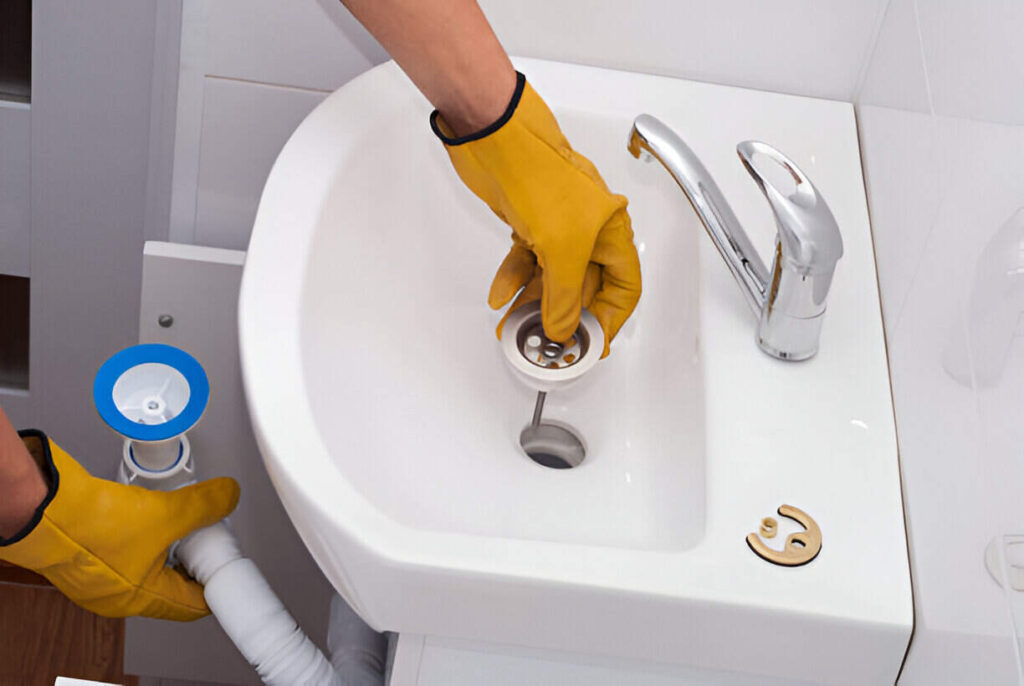Plumbing Cleanout 101: A Homeowner’s Quick Guide

Plumbing Cleanout 101: A Homeowner’s Quick Guide Cleanout access is an important part of plumbing for homes, especially when it comes to plumbing cleanouts. If you have drains that back up often or just want to be ready for anything, knowing about cleanouts can save you time, money, and trouble. What Is a Plumbing Cleanout? It’s a closed pipe that lets water out. That is put on a home’s drain or sewer line so that it is easy to clean, check, or snake when a clog happens. It keeps you from having to cut holes in walls or dig up pipes that are hidden. There is usually at least one plumbing cleanout cover near the base or yard in most modern homes. Why Cleanouts Are Essential Quick access during emergencies: A plumber can clear out clogs in a cleanout before they get into your home. Cost-effective maintenance: Instead of dismantling your Kitchen Sink Plumbing, plumbers can access the main line through the cleanout. Health and safety: Ventilating clogs outside will keep you from breathing in harmful sewer gas inside. Supports video inspection and hydro jetting through the cleanout for accurate diagnostics. Types of Plumbing Cleanouts Outdoor vs. Indoor Outdoor cleanouts: Most of the time, white or black PVC lines stick out near yards or walls. Indoor cleanouts: In garages, basements, or utility rooms, usually close to the floor or drain stack. One-way vs. Two-way Cleanouts One-way: Allows access in one direction. Two-way: Upstream and downstream, it gives you access to the main line and branch lines. Often used near piles of dirt. Locating Your Plumbing Cleanout You may find cleanouts: Near foundation walls (outside) Near the main drain stack in basements or utility rooms Along lines that split off to go to kitchens or bathrooms If you can’t find one, your home might not have one, or it might be hidden in a crawl space or under some plants. How to Use a Cleanout Put on gloves. Use tools or a wrench to unscrew the square-nut cap slowly. Call a plumber if water starts to flow under pressure; they can handle the extra sewage risk. To clear out clogs, put in a drain snake or inspection camera. Re-tighten the cap when done. When & Why You Might Not Have a Cleanout Homes that were built before 1940 might not have cleanouts. A lot of older cast iron pipe systems don’t have them. A qualified plumber can help you add a cleanout if your home doesn’t already have one. DIY Plumbing Cleanout Access Find the cap for the cleaning. To make sure it works, try to take the cap off with a wrench carefully. If it’s blocked, put a drain snake through the hole. Once everything is clear, test all the outlets to make sure they drain properly. Put the cap back on and make sure it’s tight. The cleanout stays effective with regular checks and some greasing every so often. Troubleshooting & Common Questions My cap is stuck: Use WD-40 to grease it and wait a few minutes before turning it. Water gushing out: There may be a lot of people on the main line—stop and call a professional. No visible cleanout: You can also use roof vents or toilets as alternative access points, but it is safer to have a cleanout installed by a professional. Preventative Maintenance Tips Inspect the annual seal and cap to ensure they unscrew easily. Limit flushing of grease, wipes, or non-biodegradable items. Hydro jet or snake through the cleanout yearly to prevent deep blockages. nexgenairandplumbing.com When to Hire a Professional Consider calling a licensed plumber if: You should open the cleaning. You see sewage building up. There is no cleanout fitted, and the drain keeps getting clogged. Your plumber can also add new cleanouts or make entry points bigger if there aren’t any that work. Conclusion A plumbing cleanout that is put in correctly gives you necessary access to your home’s sewer line. This makes upkeep and clearing clogs safer, cheaper, and faster. If you know about plumbing cleanout requirements, you can move quickly in an emergency and keep your pipes in good shape. FAQs – Plumbing Cleanout Q1: What’s the difference between a cleaning and a drain? A cleanout is a plug or line that lets you do repairs. Drains take waste water from fixtures. Q2: How often ought I to check my cleanout? At least once a year, or more often if there are a lot of clogs. Q3: Can I put in a cleanup by myself? Installation requires following the rules and digging, so it’s best to let a professional do it. Q4: Why shouldn’t I use the roof vent to clear out clogs? It’s risky, ineffective, and not safe. There is a better, direct entry through cleanouts.